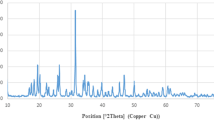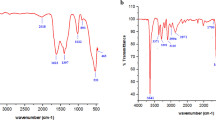Abstract
Cytotoxicity study of magnetic nanomaterials is a key consideration for biomedical applications. Very little is known about the cytotoxic and anti-cancer effects of nickel nanowires (Ni NWs) on mammalian cells and their interaction with proliferating cancer cells. Current therapeutics do not address the full heterogeneity of pancreatic cancers due to the resistance to apoptosis and does not suffice for a successful treatment. Therefore, synthesis of novel anticancer drugs continues to be a potential topic for pancreatic cancer research. In this study, we have investigated the cellular toxicity and anti-cancer effects of Ni NWs in one of the most aggressive human pancreatic ductal cancer (Panc-1) cell lines with the objective of development of a potential treatment strategy. Ni NWs were fabricated in a custom-made setup utilizing the electrodeposition method. Elemental analysis, crystallographic structure, and morphological properties of the synthesized Ni NWs were investigated using Energy Dispersive X-ray Analysis (EDAX), X-Ray Diffraction (X-RD) and Scanning Electron Microscopy (SEM), respectively. Panc-1 cell cultures were maintained according to a slightly modified American Type Culture Collection (ATCC) protocol. Morphological apoptogenic characteristics assessment of the Ni NWs induced Panc-1 cell was accomplished using phase contrast microscopy (PCM). Two commercially available cytotoxicity procedures including 3-(4, 5-dimethylthiazol-2-yl)-2, 5-diphenyl tetrazolium bromide (MTT) and trypan blue (TB) assays were utilized to determine the qualitative and quantitative cytotoxicity and anti-cancer effects of Ni NWs. As a negative control, Panc-1 cells without Ni NWs treatment were used in all experiments. Phase contrast microscopy (PCM) was used to confirm the Ni NWs internalization by Panc-1 cells. Both the MTT and TB assays, qualitatively and quantitatively confirmed the cytotoxic and anti-cancer effects of Ni NWs treated Panc-1 cells in vitro in both concentration and exposure-time dependent manners. We studied the cytotoxic and anti-cancer effects of Ni NWs on Panc-1 cells using novel integrated bionanotechnological approaches to understand the corresponding biological pathway with the objective of developing pancreatic cancer treatment. More specifically, we explored the molecular mechanisms associated with the pathway involved in Ni NWs induced toxicity against Panc-1 cells. Our results demonstrated that Ni NWs show strong candidacy for targeting cell selective applications in pancreatic cancer therapy. Key words: Nickel Nanowires, anti-cancer effects, pancreatic cancer.
Similar content being viewed by others
References
R.E. Lenhard., R. T. Osteen and T. Gansler, ACS. Clinical Oncology, American Cancer Society’s textbook of cancer. Wiley-Blackwell, USA (2000).
T. H. Ward, J. Cummings, E. Dean, Br J Cancer. 99: p. 841–846 (2008).
D. Tyler, American Journal of Gastroenterology, 96, p. 2532–2534 (2001).
D. Choi, A. Fung, H. Moon, D. Ho, Y. Chen, E. Kan, Y. Rheem, B. Yoo, N Myung. Biomed Microdevices. Volm. 9(2): p. 143–8 (2007).
H. Lu, X. Shi, M. Costa and C. Huang, Molecular and Cellular Biochemistry. Volume 279, Numbers 1–2, 45–67 (2005).
M. Costa, Fresenius J. Anal Chem. 361: p. 381–385 (1998).
J. H. Jeong, S.H. Kim, J. H. Min, Y. K. Kim, and S.S. Kim, Physica status solidi (a), 204: p. 4025–4028 (2007).
C. Potten and J. Wilson, Apoptosis: The Life and Death of Cells. Cambridge University Press, USA (2005).
M. Z. Hossain and M.G. Kleve, International Journal of Nanomedicine, vol. 6, p. 1475–1485 (2011).
S. H. Mousavi, N. Z. Tayarani, and H. Parsaee, Cell Mol Neurobiol 30: 185–191(2010).
X.D. Zhang, J.J. Wu, S. Gillespie, J. Borrow, and P. Hersey, Clinical Cancer Research p. 1335–1364 (2006).
K. Barisic, J. Petrik, and L. Rumora, Acta Pharm. 53 p. 151–164 (2003).
E.E. Hellebrand and G. Varbiro, Drug Discoveries & Therapeutics. 4(2): p. 54–61 (2010).
Acknowledgments
The authors thank Jill L. Castleberry for linguistic revision of the manuscript.
Author information
Authors and Affiliations
Corresponding author
Rights and permissions
About this article
Cite this article
Hossain, M.Z., Khudhayer, W.J., Akter, R. et al. Cytotoxic and Anti-cancer Effects of Nickel Nanowires against Pancreatic Cancer Cells. MRS Online Proceedings Library 1416, 43–48 (2012). https://doi.org/10.1557/opl.2012.667
Published:
Issue Date:
DOI: https://doi.org/10.1557/opl.2012.667




